Review of Live for the Moment
Introduction
I`d like to start off this review by saying I`m absolutely green with envy at what a young, independent film-maker has managed to do with dedication, talent and a modern camcorder. When I was Rik`s age (and I hope he doesn`t mind me banging on momentarily about this - I won`t mention it again), I had ambitions to be a film-maker as well. Of course I was stuck with Super8mm cine film rather than digital video and couldn`t even run to a camera with sound capabilities. But I wanted to be a film-maker. What stopped me in the end was cost and pressure to apply my time to exams (back in the days when school groomed you to either go to University or Teacher Training College). If I`d (okay anyone) had a Digital Video camera and basic editing software on a PC back in 1980, I wonder what I could have achieved?
I admire what Rik`s achieved with this film, which is why I`m upset that I can`t give it an unconditional thumbs-up Oscar nomination. I really really wanted to watch this film and be able to say there`s nothing wrong with it, because God knows I`ve had enough creative slaps in the face from so-called friends to know nothing does your ego more harm than showing something you`ve sweated blood and tears over to a trusted friend, just to have them turn round and rip it to pieces. Rik`s said that making this film is part of a learning curve and I know he`s mature enough to realise that what he learns from making this movie will make his next movie all the better.
These DVD reviews are always structured the same way - this first bit is background and observations, the second bit is about the picture, the third the sound and so on, so I`ll address any problems in the appropriate area.
Making a fiction movie, or tv programme is a herculean task, way more complex than making a factual movie or tv programme. With factual film-making the skills involved are largely to do with understanding the subject and communicating and passing on that understanding to the audience. At its most basic though, you`re simply recording observations of a subject. Fiction on the other hand is a complete artifice. Nothing is real - characters, incidents, locations are all fictional and like it says (or should say) in the disclaimer at the end of the movie "any similarities to actual persons living or dead is purely coincidental". And that`s where your troubles start.
Any movie starts from a script (unless you`re some avant-garde loon). Rik penned Live For The Moment himself, and unfortunately it shows. Not every director is skilled at writing, and in fact has no need to be. Nothing to be ashamed about in that. That`s what scriptwriters are there for. Scriptwriting is a skill in itself, and a largely unappreciated one beyond the theatre. It`s also a constantly evolving art form, so scripts written ten or fifteen years ago are paced completely differently to scripts written today. Live For The Moment suffers in two places - dialogue and pacing. I`ll cover pacing in the video section. Technically LFTM is an excellent, cohesive script but the main weakness is in the dialogue, and that`s where the skill of the writer lies. Look at George Lucas - pretty much one of the top players in Hollywood and he can`t write dialogue to save his life. It`s like Harrison Ford says - you can type this sh*t but you can`t say it. Rik can certainly put a story together, but he`s let down by the dialogue which tends towards the melodramatic.
Dialogue is the life-blood of drama. It`s the primary source of plot exposition for the audience, but writing good dialogue is a balancing act between giving out information and sounding natural. Of course, the genre of what you`re writing has a lot to do with how unnatural your dialogue you can get away with (see George Lucas). In the case of LFTM, the dialogue has to be pitched at The Bill level to be convincing, and unfortunately some lines definitely went over the top.
Because of the dialogue, Live For The Moment plays like a theatrical production. The theatre is all about declaiming lines and big movements. Much of the acting in LFTM is for the balcony, and the intimacy of video production really requires actors to dial it down for the camera. That`s also the primary job of the director - to get the right performance out of his cast. I`d presume most of the cast were not professional actors, and if they were, they shouldn`t be.
Nick Tatham obviously puts his soul into his central performance as Miles although the character unfortunately comes across as deeply unsympathetic when you need to be rooting for him. Sadly the script is again largely to blame for this. Specifically the breakfast scene where he more or less assaults his Mum. The fact he suffers from Tourettes does not automatically make him a sympathetic character. If anything he comes across as a bomb waiting to go off, but if that was the intention I`ll shut up...
Of the other actors and actresses in the piece, a variety of acting skills makes for an interesting cast. Noel Fitzpatrick as the ill-starred Dr Fowler puts forward the best performance, while Matthew Watkin as his nemesis Sean Jackson, comes across as pleasingly menacing. David Lenson playing DI Edwards is restricted to the interview room at the local station. Passing over a couple of procedural horrors in these scenes, the problem is largely that almost every line he utters could be followed by a loud dun-dun-DA orchestral sting as he makes a number of points that are both overly melodramatic and incredibly unprofessional for a police officer. Watch a Midsomer episode, Rik. Coppers play their cards close to the chest. Interviews involve two officers, a third uniform on the door and usually the interviewee`s solicitor.
Deep breath. Having made these points, I can still say with my hand on my heart that Rik can be proud of his opus. I`ve seen a lot of films that haven`t had half the committment poured into them, and as a result aren`t half the movie that this is. For a self-published work it is positively outstanding, and shows enormous promise for the future.
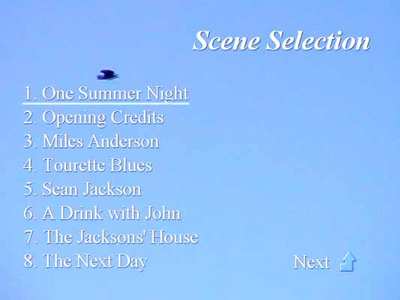
Video
Damn, these Digital Video cameras are good! Compared with the older analogue formats, you can`t argue that these DV cameras are close to broadcast standard.
Much of the movie is shot handheld. Now, there seems to be a vogue among professional cameramen to shoot handheld in order to convey immediacy, but it`s really a bad habit they need to drop. Handheld makes things look amateurish. You can really only get away with handheld if you`re using it POV - a character`s Point Of View (a policeman shouldercharging a door, for instance), when you can use cinema verite as your defence. Professional handheld work inevitably involves a Steadicam rig (where a degree of camera shake can be artificially put in - see my first point.) Otherwise, a tripod is a must.
While LFTM is very competently edited, shots are frequently way too long and insert shots are noticeable by their absence. By using the handheld camera, Rik has used longer shots with a mobile camera to shoot a scene. This is fine for Alfred Hitchcock making Rope, but in the long run, it would be much easier to follow the standard route of a locked off establishing shot intercut with close-ups. This is even easier with a multiple camera set-up if you could blag one. Incidentally, close-ups with a handheld are particularly gruesome, but this is the last time I`ll mention it.
Rik`s obeyed all of the basic editing rules, but his pacing lets him down. With LFTM, he spends an hour and a half telling a story that could have been told spellbindingly in a third of that time. Not that he has that much option with choosing to shoot with the mobile camera technique. He could pick up the pace with cut-aways and inserts but that would largely defeat the use of the mobile camera. Take for instance the first scene with Dr Fowler and DI Edwards in the interview room - Edwards leisurely unpacks two cassette tapes and and loads them into the interview room recorder. Rik shoots this in a single continuous shot of two minutes that takes a minute and a half to get to the first proper line of dialogue. This could have been done in fifteen seconds and seven shots.
MEDIUM CLOSE UP - Fowler looks up (2sec)
TWO-SHOT - Edwards enters and sits down (4sec)
MCU - Unreadable expression on Edwards (1sec)
MCU - Haunted look on Fowler (1 sec)
INSERT - Edwards` hands unwrapping one tape (3sec)
MCU - Haunted look on Fowler (1sec)
TWO-SHOT - Edwards snaps second tape into recorder, switches on (3sec)
First line of dialogue.
There`s also a missing insert where Dr Robinson switches off the tape recorder he has been recording Dr Fowler with. He simply whips something out of his pocket with a flourish and returns it. It took me until the later scene to figure out what he had been doing.
The 4:3 transfer to DVD is excellent. The picture is largely sharp and well photographed (with the exception of a few shots that had auto-exposure problems and a scene marred by a huge colour shift). If nothing, LFTM certainly proves the potential of both Rik as a film-maker and the technology in support of him.
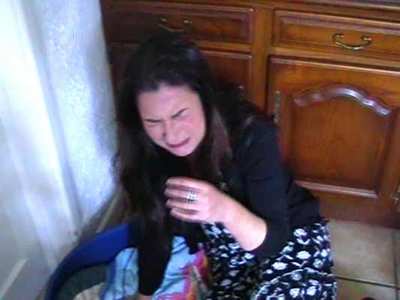
Audio
Not being privy to the technical aspects of shooting this movie, I can only surmise a number of points, so if I`ve got anything completely wrong in this review, I apologise to Rik but I`d point out that any points I`ve made are perfectly valid. The sound on the movie is a competent mix of live sound and some inserted music and is presented in Dolby 2.0.
Judging from the two or three shots where wind noise has spoiled a shot, I`d doubt if the characters were individually miked. I presume a boom mike was used at the very least, although one shot does give me the sensation of being the camera operator (Rik) feeding a line and the built-in camera mike was recording the dialogue.
Live sound is not something you tend to find in movies. It`s the thing most often replaced in movie making. Professionally, characters would be individually radio miked and the signals passed through a mixing desk prior to recording (even professional movie cameras are silent). The sound is applied to the picture at the editing stage. Exterior shots are more often than not completely redubbed at the post-production stage.
All that should be recorded during filming is the voices of the actors - ideally on individual tracks for mixing later. Every other noise should be added later in dubbing (or cyphering in tv-speak). Sound is the only area of independent film-making where the film-maker is let down by the camcorder makers, but then they tend not to be catering for budding Spielbergs.
LFTM sounds fine. There are a few problems, but they only demonstrate the inherent weaknesses in the current technology and can`t reflect on the skills of the film-makers. Special note should be made of the entirely original music employed in the movie, written by Nick Tatham who I`m sure we`ll hear more of just like our friend Rik.
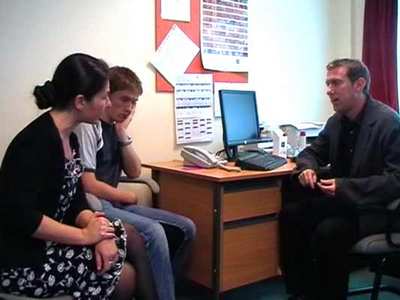
Features
Being a home-produced disc, there are no extras other than a couple of pages of production notes. A small glitch takes you back to the main menu rather than on to the second page of notes. The main menu is functional as is the scene selection menu.

Conclusion
In spite of what I hope were constructive criticisms in my main review, I`m very impressed with Rik`s directorial debut and I`m positive we`ll hear more about him in the future. At the very least, he`s got a basic showreel that should convince any film school he has the committment and talent to succeed.
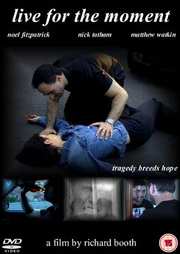
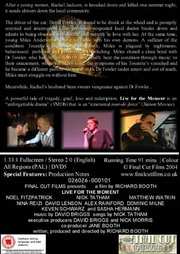



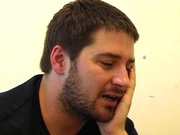

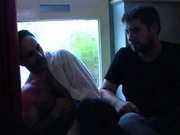
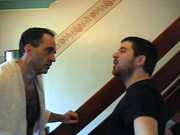
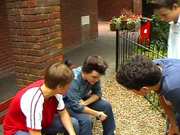
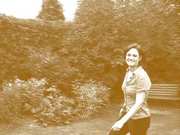
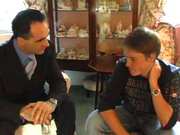




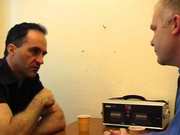
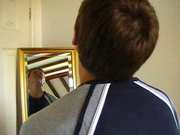

































Your Opinions and Comments
Be the first to post a comment!